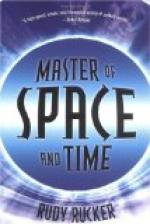But assistance was to come to him in this same eventful year of 1837, and that quite unexpectedly. On a Saturday in September a young man named Alfred Vail wandered into Professor Gale’s laboratory. Morse was there engaged in exhibiting his model to an English professor then visiting in New York. The youth was deeply impressed with what he saw. He realized that here were possibilities of an instrument that would be of untold service to mankind. Asking Professor Morse whether he intended to experiment with a longer line, he was informed that such was his intention as soon as he could secure the means. Young Vail replied that he thought he could secure the money if Morse would admit him as a partner. To this Morse assented.
Vail plunged into the enterprise with all the enthusiasm of youth. That very evening he studied over the commercial possibilities, and before he retired had marked out on the maps in his atlas the routes for the most needed lines of communication. The young man applied to his father for support. The senior Vail was the head of the Speedwell Iron Works at Morristown, New Jersey, and was a man of unusual enterprise and ability. He determined to back his son in the enterprise, and Morse was invited to come and exhibit his model. Two thousand dollars was needed to make the necessary instruments and secure the patents. On September 23, 1837, the agreement was drawn up by the terms of which Alfred Vail was, at his own expense, to construct apparatus suitable for exhibition to Congress and to secure a patent. In return he was to receive a one-fourth interest. Very shortly afterward they filed a caveat in the Patent Office, which is a notice serving to protect an impending invention.
Alfred Vail immediately set to work on the apparatus, his only helper being a fifteen-year-old apprentice boy named William Baxter. The two worked early and late for many months in a secret room in the iron-works, being forced to fashion every part for themselves. The first machine was a copy of Morse’s model, but Vail’s native ability as a mechanic and his own ingenuity enabled him to make many improvements. The pencil fastened to the armature which had marked zigzag lines on the moving paper was replaced by a fountain-pen which inscribed long and short lines, and thus the dashes and dots of the Morse code were put into their present form. Morse had worked out an elaborate telegraphic code or dictionary, but a simpler code by which combinations of dots and dashes were used to represent letters instead of numbers in a code was now devised. Vail recognized the importance of having the simplest combinations of dots and dashes stand for the most used letters, as this would increase the speed of sending. He began to figure out for himself the frequency with which the various letters occur in the English language. Then he thought of the combination of types in a type-case, and, going to a local newspaper office, found the




